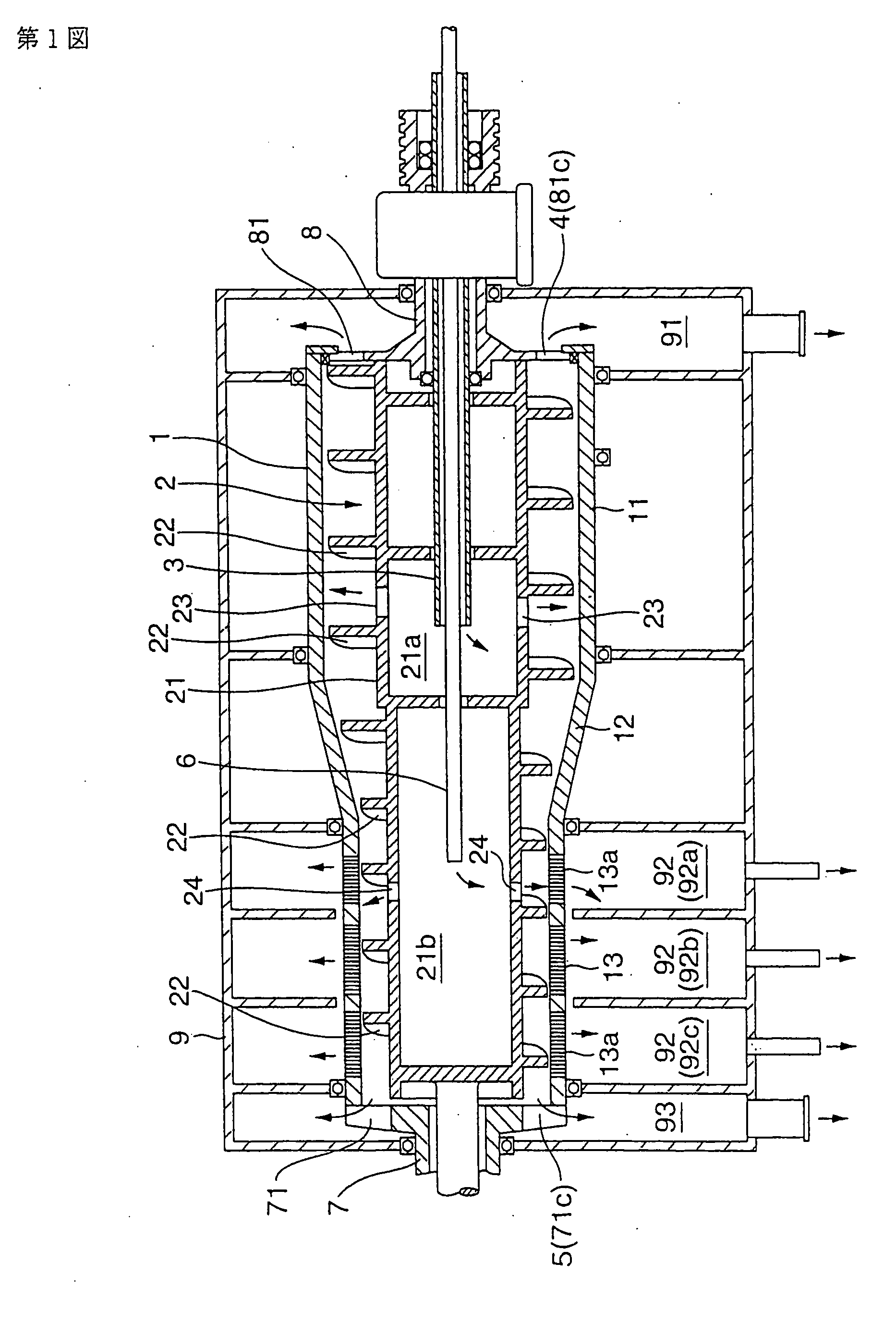Process for the preparation of aromatic dicarboxylic acids
- Summary
- Abstract
- Description
- Claims
- Application Information
AI Technical Summary
Benefits of technology
Problems solved by technology
Method used
Image
Examples
example 3
[0044] Solid-liquid separation was conducted in the same manner as in Example 1 except for use of a slurry containing terephthalic acid crystals with an average grain size of 110 .mu.m and having a solid concentration of 30% by weight, use of a screen (slit type) with an opening size of 150 .mu.m and employment of the conditions of 160.degree. C. and 0.65 MPa. Results are shown in Table 1.
1 TABLE 1 Comp. Example Example Example Example 1 2 1 3 Screen opening size (.mu.m) 100 100 70 150 Slurry throughput (t / hr) 1.1 1.5 1.1 6.0 Centrifugal force (G) 750 1000 750 750 Ratio of crystals which 3.0 5.2 0.5 5.9 escaped through screen openings (wt %) Average grain size of 60 64 15 110 crystals which escaped through screen openings (.mu.m) Recovered crystals Liquid content (wt %) 11 10 20 11 P-TA concentration -- 157 -- --(ppm)
[0045] As is apparent from the results shown in Table 1, in the case of Examples 1 to 3, the liquid content in the recovered solid matter is lower than in Comparative E...
referential examples 1 to 6
[0046] In order to ensure the effect of the residence time, solid-liquid separation was conducted in the same manner as in Example 1 by employing the conditions shown in Table 2 (the centrifugal force on the screen being 750 G). The liquid content of the recovered cakes is shown in Table 2.
2 TABLE 2 Liquid content Referential Residence Slurry supply of recovered Example time (sec) rate (kg / hr) cakes (wt %) 1 3.2 1110 13.0 2 3.2 1480 12.7 3 5.6 1110 11.6 4 5.6 1480 11.1 5 0.8 1110 19.4 6 0.8 1480 21.4
[0047] The residence time in Table 2 is the time after the slurry has passed the supply area of the cleaning fluid spurted from the cleaning fluid supply port (24) (more specifically, the time after the point of time at which 2 seconds have passed after the slurry reached just below the cleaning fluid supply port (24)). The residence time of each case and the liquid content of the recovered cakes were determined in the following way for convenience. That is, the filtrate specimen was rec...
PUM
| Property | Measurement | Unit |
|---|---|---|
| Percent by mass | aaaaa | aaaaa |
| Percent by mass | aaaaa | aaaaa |
| Percent by mass | aaaaa | aaaaa |
Abstract
Description
Claims
Application Information
 Login to View More
Login to View More - R&D
- Intellectual Property
- Life Sciences
- Materials
- Tech Scout
- Unparalleled Data Quality
- Higher Quality Content
- 60% Fewer Hallucinations
Browse by: Latest US Patents, China's latest patents, Technical Efficacy Thesaurus, Application Domain, Technology Topic, Popular Technical Reports.
© 2025 PatSnap. All rights reserved.Legal|Privacy policy|Modern Slavery Act Transparency Statement|Sitemap|About US| Contact US: help@patsnap.com

